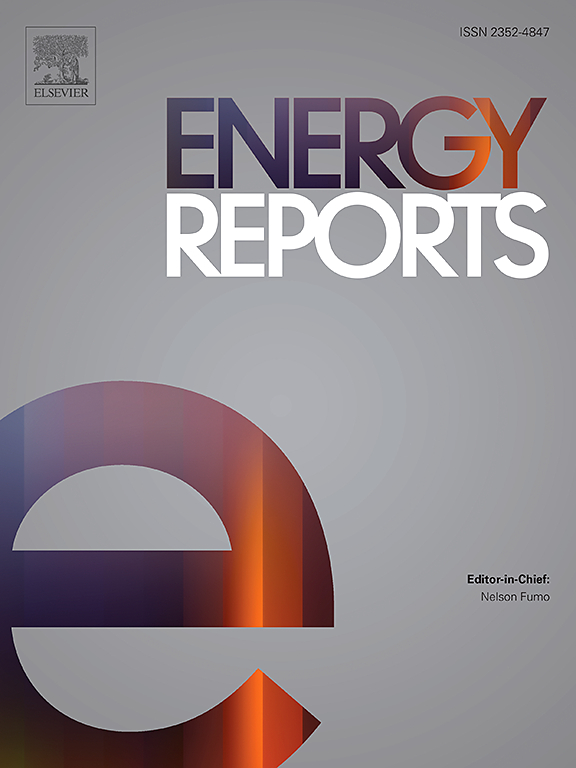分散式能源系统的能源安全:利用农业发电实现电力自给自足的村庄?
IF 5.1
3区 工程技术
Q2 ENERGY & FUELS
引用次数: 0
摘要
随着《绿色协议》的实施,欧盟的能源转型势头强劲。现在几乎一半的电力消耗由可再生能源覆盖,其中太阳能技术占很大份额。然而,光伏发电的大规模扩张正越来越多地为当地的每个人所感受到。电网的容量已达到极限。为了保持系统的平稳运行,重新调度措施的数量呈指数级增长。反过来,这又反映在电力交换中,交换价格低得离谱,在刮风和晴朗的时候,甚至是负交换价格。这些趋势提出了未来如何维持和实现能源安全的问题。在这种情况下,一个分散的能源系统正在建模,以创建一个电力自给自足的村庄,使用农业发电。这样做的好处是土地可作双重用途。市民、商业、市政当局和农民之间的能源共享使用创造了一个自我管理的能源社区。农民在这种土地双重利用中起着关键作用。本文探讨了利用农业发电实现电力自给自足的村庄对能源安全的贡献这一核心研究问题。本文基于对215名德国农民的调查。调查结果表明,通过该模型可以提高能源安全。为实现利用农业发电实现电力自给自足的村庄,可以制定各种政策影响。第一步是在3月至10月的阳光充足的月份实现电力自给自足,直到跨季节存储介质可用并准备好批量生产。本文章由计算机程序翻译,如有差异,请以英文原文为准。
Energy security through decentralized energy system: Electricity self-sufficient village using agrivoltaics?
With the Green Deal, the energy transition in the EU has gained momentum. Almost half of electricity consumption is now covered by renewable energies, with solar technology accounting for a significant share. However, the massive expansion of photovoltaics is increasingly being felt by every individual locally. The electrical grids are reaching their capacity limits. The number of redispatch measures is rising exponentially to keep the system running smoothly. This, in turn, is reflected on the electricity exchange in exorbitantly low exchange prices and, during windy and sunny hours, even in negative exchange prices. These trends raise the question of how energy security can be maintained and achieved in the future. In this context, a decentralized energy system is being modeled to create an electricity self-sufficient village using agrivoltaics. This has the advantage that the land can be used for dual purposes. The shared use of energy between citizens, commercials, municipalities and farmers creates a self-managed energy community. Farmers play a key role in this dual land use. This paper examines the central research question of what contribution an electricity self-sufficient village using agrivoltaics can make to energy security. This paper is based on a survey of 215 German farmers. The survey results show a trend that energy security can be increased through this modelled decentralized energy system. Various policy implications can be formulated for the realization of an electricity self-sufficient village using agrivoltaics. The first step is to achieve electricity self-sufficiency during the sunny months from March to October, until cross-seasonal storage media are available and ready for series production.
求助全文
通过发布文献求助,成功后即可免费获取论文全文。
去求助
来源期刊

Energy Reports
Energy-General Energy
CiteScore
8.20
自引率
13.50%
发文量
2608
审稿时长
38 days
期刊介绍:
Energy Reports is a new online multidisciplinary open access journal which focuses on publishing new research in the area of Energy with a rapid review and publication time. Energy Reports will be open to direct submissions and also to submissions from other Elsevier Energy journals, whose Editors have determined that Energy Reports would be a better fit.
 求助内容:
求助内容: 应助结果提醒方式:
应助结果提醒方式:


